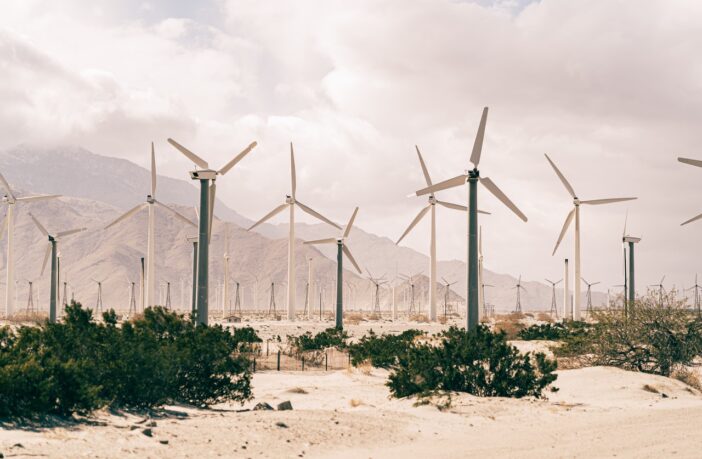There is a huge amount of momentum in harnessing wind power across Europe. Only recently mega wind farms have been announced in Denmark, the UK and other places.
However a new report by industry body WindEurope has highlighted how the continent still is not moving fast enough in pivoting to wind to deliver the Green Deal and climate neutrality:
The report concluded that Europe installed 14.7 GW of new wind energy in 2020 with 80% of this onshore wind.
Europe now has 220 GW of total wind energy capacity and is set to build 15 GW per year over the next 5 years.
However it needs 27 GW per year to deliver the 55% emissions reductions by 2030.
Like many other industries, Covid19 loomed large over the wind energy industry in 2020. WindEurope suggests it is one of the main reasons why only 14.7 GW of new wind farms were created in the year – 19% less than what was expected before COVID.
WindEurope expects Europe to build 105 GW new wind farms over the next 5 years, over 70% of which will be onshore. The EU27 are set to build only 15 GW per year of new wind over 2021-25, whereas they need to build 18 GW per year over 2021-30 to deliver the existing 2030 EU renewables target and 27 GW per year to deliver the higher target that’s now coming with the 55% climate target.
The report highlights that the main issue is permitting. It argues that rules and procedures are too complex, and governments are not fast enough at processing applications. The group stresses that governments need to take urgent action to address this.
The slowing rate is also exacerbated by the fact that a growing number of wind turbines are reaching the end of their operational life.
The Netherlands built the most (2 GW, mostly offshore) followed by Germany, Norway, Spain and France. The EU27 accounted for 10.5 GW of the new capacity.
Wind was 16% of all the electricity consumed in Europe in 2020. It was 27% in Germany and the UK, 22% in Spain – and 48% in Denmark.
Giles Dickson, WindEurope CEO, said: “Wind is now 16% of Europe’s electricity. But Europe is not building enough new wind farms to deliver the EU’s climate and energy goals. The main problem is permitting. Permitting rules and procedures are too complex. There are not enough people working in the permitting authorities to process permit applications. Governments have to address this. Otherwise the Green Deal is at risk.”
Marco Mensink, Cefic Director General, said: “Renewable electricity including wind power is a cornerstone in the decarbonization of the Chemical industry in Europe. We simply need it, we need it at a competitive price and we need more, both for direct electrification and to fulfill our central role in the hydrogen economy. WindEurope’s new figures clearly reveal a problem in the future supply as simply not enough capacity is added. The sheer volume needed by different industries, who all will increase electrification at the same time and increase demand requires targeted action. A specific focus on electrification in industry, sectoral roadmaps to inform and strengthen the Commission’s Industrial Ecosystems model, greater policy coherence across the board and adaptive state aid and competition law frameworks to enable the new models of cross-sector cooperation which President von der Leyen has called for are all needed.”
Axel Eggert, EUROFER Director General, said: “The EU needs to speed up significantly the installation of wind capacity that provides affordable electricity for Europe’s green transition. Wind energy and steel already today form a critical ecosystem in Europe and will so even more on Europe’s way to carbon neutrality and circularity. Our industry is eager to deliver not only 100% recyclable, perfectly circular steel to its clients, including the wind industry, but also steel that is CO2 neutral. For this, we need wind energy to help providing the 400 TWh of electricity that our industry requires by 2050, an amount comparable to the electricity consumption of France.”




